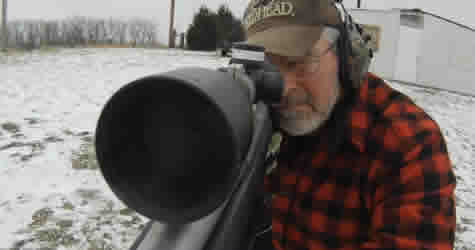
The Buck Fever Stops Here
This debilitating mindset can affect experienced and new hunters of all ages, so make ‘mindful practice’ a part of your big game hunting preparations.
It’s the day of the hunt and you’ve sighted your quarry. As you get ready to take the shot, your heart beats faster, you start to sweat, and your hands shake. You want to shoot, but are afraid to miss, and the longer you wait, the worse it gets.
You realize you’re suffering from buck fever, but what can you do about it? “What hunters call ‘buck fever’ can be made up of different psychological reactions,” said sports psychologist Dr. Eddie O’Connor.
“One of the things about anxiety is that, physiologically, it is exactly the same as excitement. When you talk about not being able to be physically calm and to hold a steady shot, there’s no way to know whether it’s from excitement or nervousness or performance anxiety.”

The good news, O’Connor said, is that there are effective techniques to help that should work no matter the underlying cause. “Much of this comes down to focusing on the moment and concentrating on the process and not the outcome,” he said.
According to O’Connor, beating buck fever starts long before the hunter enters the field. He stressed the importance of physically practicing the skills needed while visualizing a successful outcome.
“When you visualize yourself performing a skill correctly, neural pathways are created in your brain that reinforce the physical practice you’ve taken. You associate the physical movements with the visualization of the success.”
O’CONNOR RECOMMENDS hunters conduct “mindful practice” to help them become more aware of their mental and physical state. One technique is to practice deliberately controlling your breathing as a way to gain or maintain control over your reactions.
“If you do breathing exercises for a few minutes every day, you will be much more aware of your strengths,” he said. “The ability to control your breathing helps your focus, and being able to focus reduces anxiety or nervousness.”
Dr. James A. Swan, a retired sports psychologist and author of the video Conquering Buck Fever, said the overall key is to improve your full concentration. He defines this as “a focused mental state of mind-body coordination where intention and execution arise from a conscious decision that seems to happen without thought.”
Swan agreed with O’Connor on the importance of advance preparation. “Practice builds confidence,” Swan said. “It’s important to know what to practice and how to practice.” He said that hunters need to practice both the physical and mental aspects of marksmanship to increase their odds of making the shot.
One technique he recommended is that hunters first visualize themselves shooting a target and shooting a perfect bull’s-eye. “Now change your mental target to a big, beautiful deer and perform the shot in your mind again,” he said. “If you now feel more tense or nervous, this can show that you may have reservations about killing or wounding the animal.”
Swan said these reservations are normal, especially for newer hunters, and need to be acknowledged if they exist. He said one way to do that is to think about what he calls “The Hunter’s Prayer,” during practice. The prayer is, “Lord, if I shoot at this animal, I pray that I will miss cleanly or kill cleanly.”
SWAN ALSO EMPHASIZED the importance of breathing as a basic relaxation technique. “You want to take your breath in, hold it, and then slowly exhale. Count to four while you inhale, count to seven while you hold, and count to eight while you exhale.
This will make you more aware and help you unite mind and body.” Another technique is to use a word to improve your focus. Swan suggests using the same word, such as “Bull’s-eye” or “Jackpot” as you shoot during practice and again when you shoot in the field. “If you say the word while you make the shot during practice, you then associate that word with success.
By saying it in the field it adds those elements of success to the moment of truth.” Both men offered advice on what to do if you weren’t able to prepare ahead of time and have an attack of buck fever in the field. “Anxiety is normal,” said O’Connor.

“Don’t be nervous about being nervous. That’s enough to get a negative feedback loop started. Instead just accept the physical symptoms, the shaking hands or whatever, and commit to the task.
Don’t get distracted. Just take a deep breath and, if the shot feels good, take it.” Swan also said not to worry about the physical symptoms. “Don’t be critical of yourself if you are shaking.
You still need to be aware of what you are doing, so note it, but don’t focus on it. Instead, focus on your breathing and the positive imagery of you making the shot.” “The goal is what I call ‘shooting in the zone,’” Swan said. “You want to feel comfortable with the excitement so the excitement itself does not make you nervous. Once you work in that positive imagery, and relaxation brought about with the breathing techniques, it’s almost magical how the anxiety slips away. You enter the zone of performance, and making the shot feels almost effortless.”
Story by Rob Reed


